City-Industry Integrated Planning and Development in Singapore
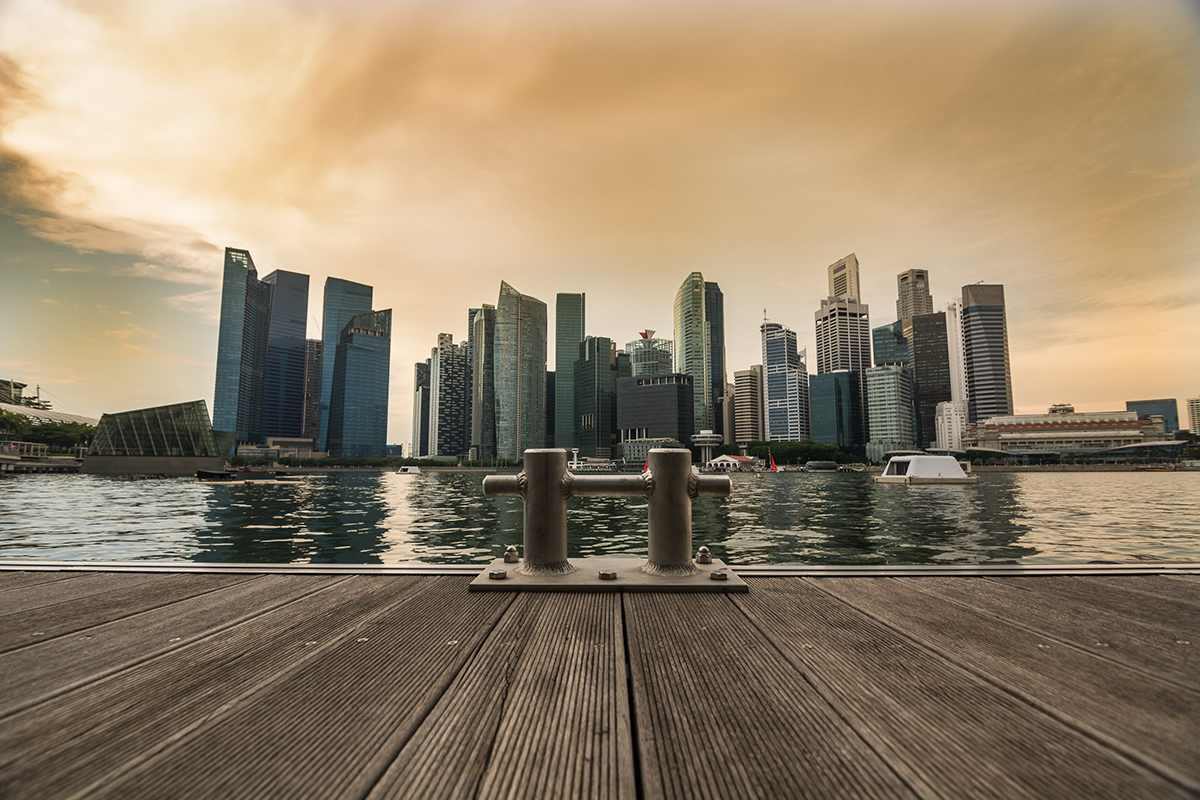
By SJ Economic and Industrial Planning
Background
City-industry integration is a central tenet of sustainable growth. By integrating diverse land uses, the elements of “industry” and “city” are to be well-balanced within a regional cluster. “Industry” refers to activities involving goods and services producing industries, while “city” refers to residences, commercial facilities and places of leisure, woven seamlessly with nature and waterbodies. On one hand, industrial estates drive employment and attract talents; on the other, towns support and improve the business and living environment of the cluster by providing comprehensive facilities and amenities that meet daily needs of residents.
Singapore has undergone more than 50 years of industrial and urban development, and has achieved considerable success via the adoption of city-industry integration in its planning. The impact of city-industry integrated development model on Singapore’s transformation is exhibited at different scales – Singapore at National Level, West Region and One-North.
City-Industry Integration – Singapore at National Level
Singapore has a clear mission – “to make Singapore a great city to live, work and play in”. This mission was evidently manifested in Singapore’s 1991 concept plan, where the concept of “self-contained cities (regions)-within-a-city” is observed (Figure 1a). Each of the five regions in Singapore was planned to encompass all 3 elements of “live”, “work” and “play”. Employment opportunities from goods and services producing industries was to match job demand from residents of each region, ultimately arriving at a job supply: job demand ratio of approximately 1:1 when the region matures. Meanwhile, an urban transportation system consisting of an integrated road and rail network, has been responsible for the inter and intra connectivity between regions. Figure 1b depicts the latest master plan, which is the result of revisions to previous plans (including Figure 1a) and the translation of broad long-term strategies.
During the initial development stage, goods producing industries constituted the main form of economic activity. With an increase in scale and economic impact, demand for consumer and product services rose to support the entire manufacturing value chain and created a supportive business ecosystem. This facilitated the integration of city functions into industrial-led areas, gradually transforming monotonous industrial estates into vibrant industrial towns with places for leisure activities. Since the 1960s, industrial development, as evidenced by a growth in GDP and GDP per capita, is accompanied by a growth in total constructed land area and total population. As GDP per capita increased from an estimated USD428 in 1960 to USD46,570 in 2010, urban constructed land increased 2.6 times from approximately 162 sqkm to 421 sqkm (of which, industrial area accounts for approximately 76 sqkm and residential area, approximately 91 sqkm). Meanwhile, total population in Singapore grew from 1.65 million in 1960 to 5.08 million in 2010. As detailed in Table 1, each region has varying economic focuses.
Figure 1 – Planning and Development of Singapore
(a) Concept Plan 1991 (b) Master Plan 2014
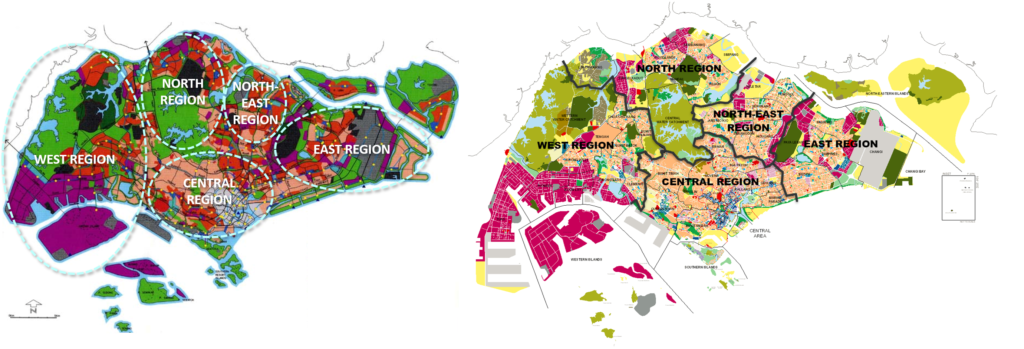
Table 1 – Increase in Constructed Land Area and Economic Focuses of 5 Regions
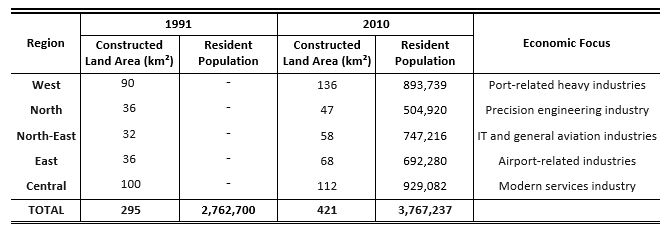
Note: Figures on constructed land area (including roads) are estimates based on satellite images.
City-Industry Integration – West Region
Spearheading Singapore’s industrial development, the West Region was once a greenfield site that was planned with a port-industry-city integrated development model. Its well-defined land uses allow goods producing industries to enjoy economies of scale while leveraging on a nearby port for cost reduction. Meanwhile, the industries are also being supported by comprehensive residential and commercial facilities, such as shopping malls, banks, universities and hospitals (Figure 2a and 2b). This integrated development advances economic, social and environmental priorities, and has even created a harmonious and conducive wildlife environment. The Jurong Bird Park hosts 400 species, and is Asia’s largest bird paradise; while the western water catchment comprises several reservoirs that harvest urban stormwater for potable consumption. Constructed land in the West region in 1985 was estimated to be 61 sqkm, which increased to 92 sqkm in a decade, and 141 sqkm in 2016 (Figure 2c). The region has proven to be attractive and successful with resident population of approximately 912,000 in 2017, on track to achieving its planned population of 1.13 million.
Figure 2 – Planning and Development of Singapore’s West Region
(a) Port-Industry-City Integrated Development Model (b) Master Plan 2014 of West Region
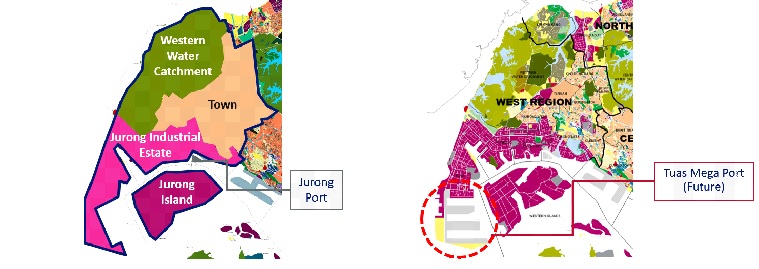
(c) Development of West Region Over the Years
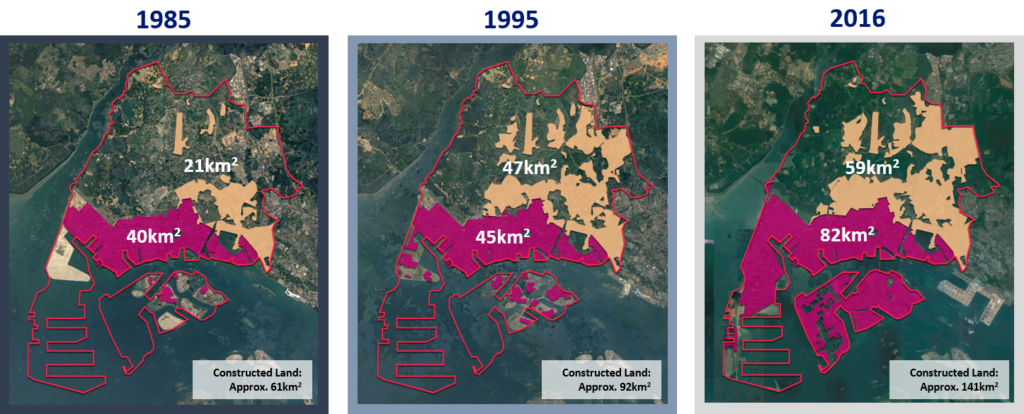
Note: Figures on constructed land area (including roads) are estimates based on satellite images.
City-Industry Integration – One-North Development
In line with the 21st century economic focus on knowledge and innovation-intensive industries, the One-North development was conceptualised as a vibrant business park with an integrated work-live-play-learn environment. A microcosm of a self-sustainable city, the master plan of the 200-hectare area integrates industry-centric research, development facilities and business park spaces, alongside lifestyle options and educational institutions, both horizontally and vertically spatially (Figure 3). Residences are provided to meet the needs of employees’ accommodation to the best extent possible. Under the master plan, One-North is to focus on biomedical sciences, infocommunications and media, as well as financial and business services.
With its launch in 2001, One-North has since transformed into a technological and innovation hub that accommodates more than 400 companies with an estimated 46,000 workers (figures is taken as of 2017). Fusionopolis Phase I, designed for the growth of information and communications technologies (ICT), physical sciences and engineering industries, is now an exemplary vertical city. This high-density integrated development has direct access to an MRT station and comprises offices, retail shops, serviced apartments, a health club, and a digital arts theatre. Apart from typical housing options found in One-North and its surrounding areas, the provision of serviced apartments within the building offers high-calibre talents the option for short stays and an array of professional support services.
Figure 3 – Planning and Development of One-North
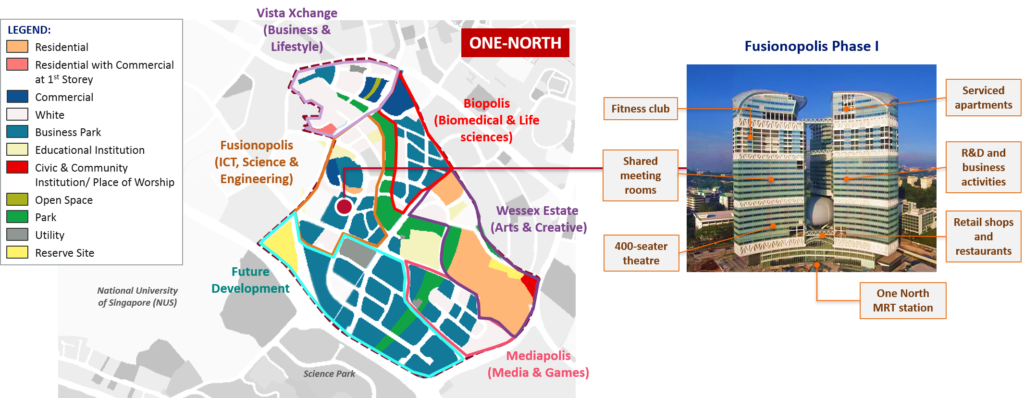
Key Considerations for City-Industry Integrated Development Model in Singapore
Singapore’s journey towards integrating land uses may be summarised into the following key considerations:
Sustainable Industrial Upgrading – Basis of City-Industry Integration
Integrated land use planning is industry-led and industrial upgrading forms its basis and fundamental. Cities grow and increase in population only when industries undergo transformation and upgrading. As industries upgrade, the method of integrating industrial and city functions would need to vary to match the different spatial requirements of different industries. For instance, capital-intensive industries such as the manufacture of machinery and equipment, and petrochemical industries require a larger, continuous tract of land, whereby land parcels are not interspersed with various uses. Meanwhile, knowledge and innovation-intensive industries require space flexibility and more common spaces to facilitate knowledge sharing between professionals.
Matching Employment Opportunities and Job Demand at Different Spatial Scales
To create self-contained regions, an area needs to create employment-generating spaces that offer job opportunities closer to homes. At the regional scale, it is vital to minimally match internal job demand with sufficient job opportunities. This localises daily needs and disperses traffic by reducing the need for people to travel long distances on a regular basis. Set to be the largest commercial and regional centre outside the city centre, the 360 hectares Jurong Lake District in the West Region has transformation plans to create it into a future-ready second CBD. It will not only develop an estimated 20,000 new homes but will also offer more than 100,000 new jobs to residents in the area. For an area of a smaller scale, employment opportunities might not be sufficient to meet job demand but this is to be achieved in its best possible manner.
Attract and Retain Talents by Offering Attractive Facilities and Amenities
City-industry integration is not merely a practical solution to resolving issues such as land scarcity or traffic congestion. It is also about bringing people together, improving their lifestyle and enhancing their everyday experiences. To attract and retain talents necessary to promote sustainable city development, quality and comprehensive public service facilities and commercial services must be provided. From CBD to regional centres, towns, neighbourhoods and precincts, urban functions in Singapore are hierarchically provided to fulfil residents’ living and leisure needs of different age groups. Producer and consumer services are conveniently made accessible to residents within the area, offering great living convenience and sustaining communities for enterprises in the area.
Figure 4 – Comprehensive Facilities and Amenities are Hierarchically Provided at Different Levels
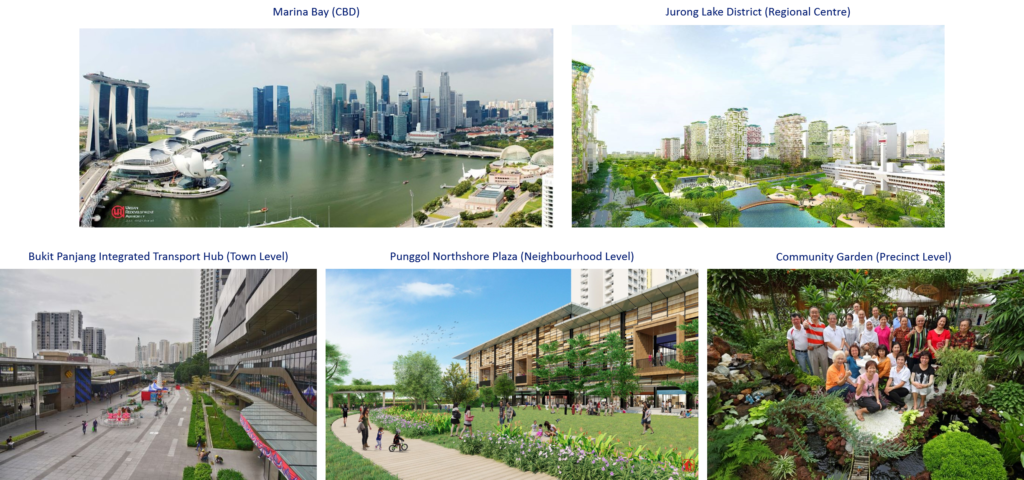
Conclusion
Regardless of the economic focus of an area, planning and development in Singapore place great emphasis on integrating its industrial and urban city functions. According to various industry types, different ways of city-industry integration models are adopted to meet varying requirements. The need to balance job supply and demand is also vital in creating a quality and conducive living environment, along with the provision of comprehensive facilities and amenities. As a city lab that constantly reviews its development strategies to fulfill the changing needs of residents, the city-industry integrated development model constantly remains at the core of Singapore’s planning by efficiently utilising available land and reducing the impact of development on the environment, hence strengthening resilience and sustainability of the city.
Connect with Us
Dr Zhang Qingyu
Email: [email protected]
References
- Centre for Liveable Cities. (2016). Insights from the Development Experience of China and Singapore. In CLC, Challenges and Reforms in Urban Governance.Singapore: CLC.
- Centre for Liveable Cities. (2018). Urban System Studies (1st Edition). In C. Chow, J. Chia, & M. Zhan, Integrating Land Use & Mobility: Supporting Sustainable Growth. Singapore: CLC.
Perspectives, developed by SJ Academy, is our platform to explore new ways of tackling some of today’s most complex challenges. We draw on ideas and opinions from our staff associates and experts across different businesses. Click here to read more about the Workplace of the Future, Singapore’s Logistics, and Aviation Planning in Singapore.



 Download Article
Download Article 